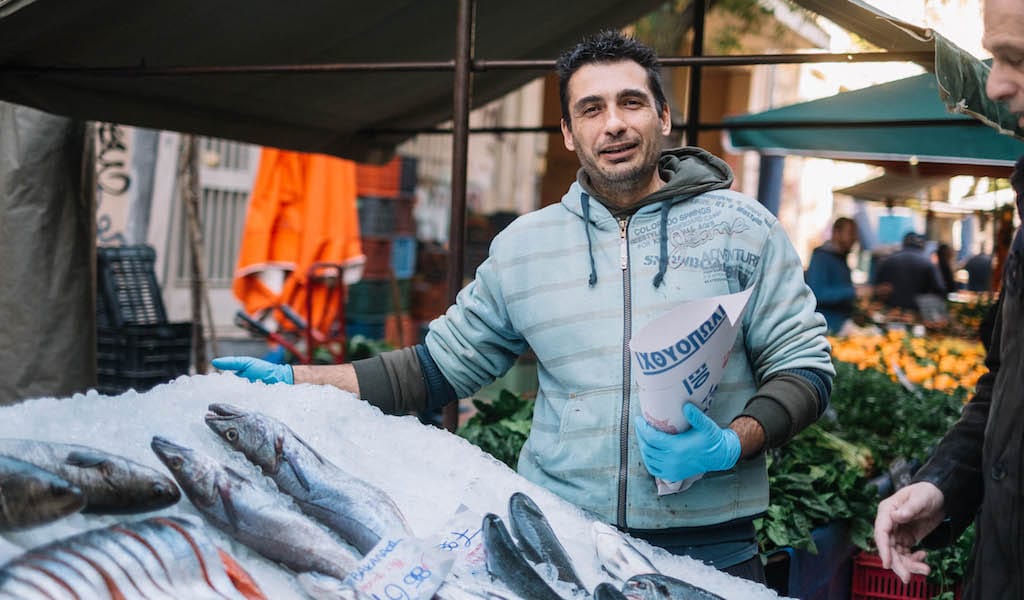As the calendar year turns over, we’ve grown accustomed to the barrage of lists telling us where to travel during the next 12 months. Oftentimes these places are a country or even a whole region – you could spend an entire year exploring just one of the locations listed and still barely make a dent.
We like to travel on a smaller scale. Forget countries and cities, for us the neighborhood is the ideal unit of exploration. Celebrating neighborhood life and businesses is, of course, essential to what we do as Culinary Backstreets. Since our founding in 2012, we’ve been dedicated to publishing the stories of unsung local culinary heroes and visiting them on our food walks, particularly in neighborhoods that are off the beaten path.
But this year we are planning to dive even deeper into the cities we work in. Getting off the beaten path leads to fresh experiences, but more importantly, it’s a way for us to contribute to the economies of neighborhoods otherwise neglected by the tourism industry. Tourism is an important economic force in many cities, as it should be, but if it is not dispersed responsibly, it can devastate the urban ecosystem, one that’s based on the sound health of all of a city’s neighborhoods.
With that in mind, we are happy to declare 2018 as “The Year of the Neighborhood,” one in which our focus will be on neighborhoods off the beaten path and the people and places that keep them going. To get things started, below is a compilation of the less-visited areas that our correspondents are planning to explore this year:
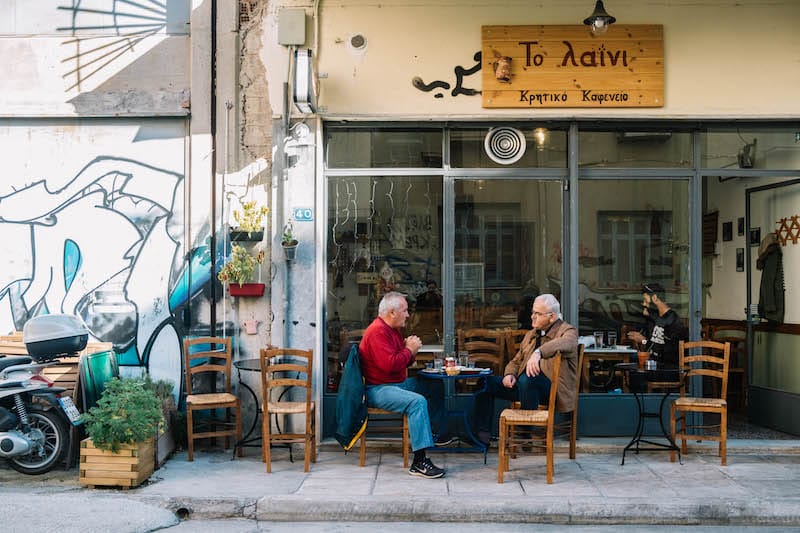
Athens: Keramikos
 Located just a ten-minute walk from Athens’ buzzing historic center, the laid back Keramikos neighborhood seems to live in a magical world of its own. It’s a place where old and new, Greece’s storied past and often turbulent present, tradition and forward-looking creativity, all coexist happily together. There are few other places like it in the Greek capital.
Located just a ten-minute walk from Athens’ buzzing historic center, the laid back Keramikos neighborhood seems to live in a magical world of its own. It’s a place where old and new, Greece’s storied past and often turbulent present, tradition and forward-looking creativity, all coexist happily together. There are few other places like it in the Greek capital.
Famed in ancient times for its pottery – hence the area’s name – made from mud collected on the banks of a sacred river that once ran through it, in the last few decades Keramikos was better known as a run-down working-class neighborhood of closed factories, abandoned properties and the occasional brothel.
But starting in the early 2000s, smart investors started seeing the area’s potential. They built elegant modern lofts, renovated old neoclassical gems and established hip art galleries, which paved the way for the opening of several appealing bars, cafés and, of course, restaurants. These range from Michelin-starred Funky Gourmet and hip taverna Seychelles to several tiny holes in the wall serving only tsipouro and a couple mezes.
Greece’s ongoing economic crisis, however, put the breaks on Keramikos’s development. But, on the flip side, this has kept rents low and gentrification in check, which is why more restaurants and bars driven by a personal vision continue to open here today. It’s one of the few areas in the city that preserves a feeling of old Athens while simultaneously serving as a hub for young, creative Athenians who are determined to enjoy life, recession be damned. – Carolina Doriti
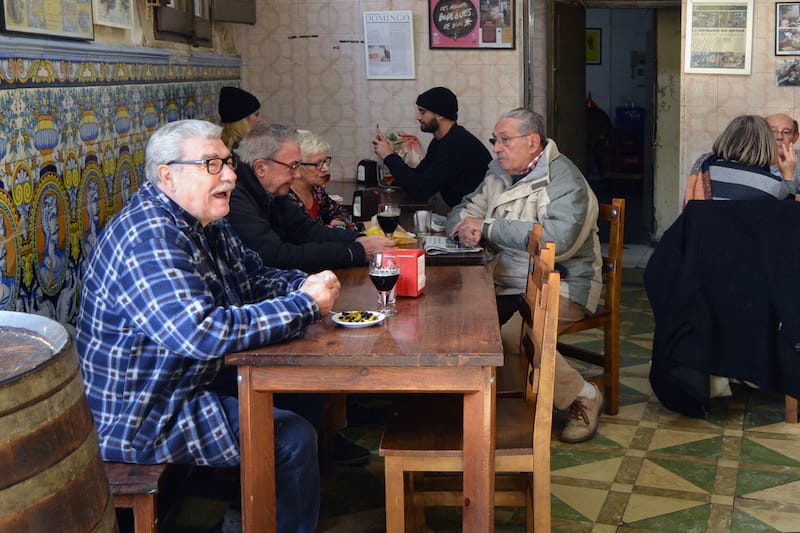
Barcelona: Sants-Montjüic
 Most locals know the Sants-Montjüic area as a place they pass through on their way to Barcelona’s main train station, but to us it represents something much deeper: A neighborhood where we can still experience the city’s original soul – culinary and otherwise.
Most locals know the Sants-Montjüic area as a place they pass through on their way to Barcelona’s main train station, but to us it represents something much deeper: A neighborhood where we can still experience the city’s original soul – culinary and otherwise.
While other parts of Barcelona, especially its historic center, have had to contend with the effects of the city’s growing popularity, Sants has somehow managed to stay under the radar, allowing it to keep much of its traditional charm and way of life, while also being an inviting area for new ventures to give it a go. This is a place where you can still find old bodegas with wooden casks filled with bulk wine for sale, homey vermuterias where locals gather to chat over seafood tapas, family-run restaurants where neighbors come on a daily basis for favorite classics and bakeries that keep Catalan traditions alive by offering holiday specialties all year round. To top it off, the neighborhood has a recently restored covered market, countless old-school food shops and a wonderful mix of traditional spots that have been around for generations and new restaurants and tapas bars opened up by innovative young chefs escaping high rents in the center of town.
Adding to the neighborhood’s distinct character and charm is its history rooted in Barcelona’s 19th-century industrial development. Sants was once one of the city’s economic engines, something reflected in the area’s street names – there’s one honoring James Watt, inventor of the steam engine – and the old factory chimneys that dot the neighborhood, as well as the still strong working-class identity of its residents. These days, the old textile factories that made the area famous are being put to use in new and innovative ways, housing an eclectic mix of community-run groups, from choirs to co-op radio stations and even urban farms.
A large number of entrepreneurs and locals have fled the overly gentrified city center, preferring instead to work and live in Sants. These residents have plenty of choice when it comes to eating. Culinary gems like La Mundana and El Petit Pau, which are relatively new to the scene, shine bright, while restaurants like Terra d’Escudella and bodegas like Bartolí and Salvat, a bar that’s like a second home for its loyal clientele, keep the traditional spirit of Catalan identity alive. – Paula Mourenza
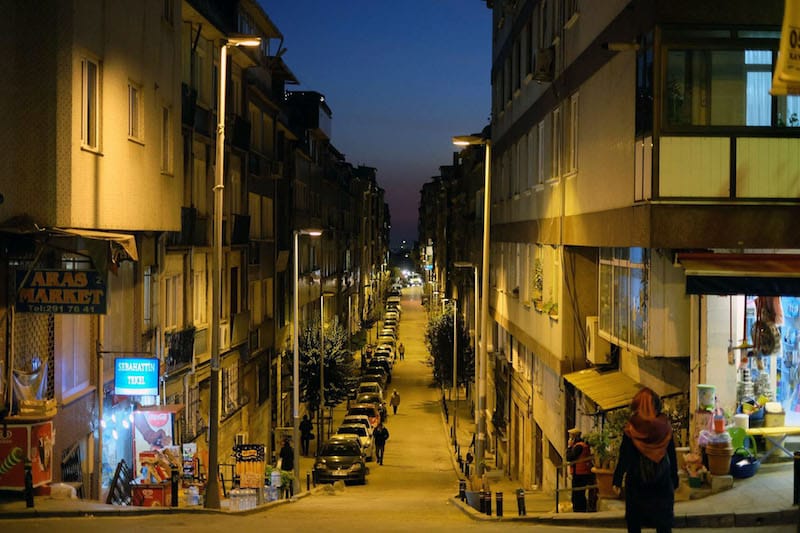
Istanbul: Kurtuluş
 Kurtuluş, located a mere metro stop away from Taksim Square, is a neighborhood in the fullest sense of the term. Small business culture is strong, and the number of quality eating and drinking establishments is high. There are no breathtaking views of the Bosphorus and little green space, but there are streets as straight as an arrow that manage to provide a semblance of comfort in this tangled urban jungle.
Kurtuluş, located a mere metro stop away from Taksim Square, is a neighborhood in the fullest sense of the term. Small business culture is strong, and the number of quality eating and drinking establishments is high. There are no breathtaking views of the Bosphorus and little green space, but there are streets as straight as an arrow that manage to provide a semblance of comfort in this tangled urban jungle.
The elephant in the room is the erasure of the area’s past, as evidenced by the blatantly nationalist street names that were introduced following the establishment of the Turkish Republic in 1923 (the neighborhood was formerly known by its Greek name, Tatavla). The ensuing decades saw the flight of most of Istanbul’s remaining non-Muslim population, though a few Greeks and a sizable Armenian population remain in Kurtuluş today (some of them frequent Tadal, an Armenian deli in the neighborhood). Strolling through the neighborhood’s streets, you’re guaranteed to hear the Armenian language spoken by some of the area’s longtime residents. At Ben-u Sen, you have the privilege of eating the fantastic southeastern cuisine of Nuray Güzel, an elderly Armenian woman from Diyarbakır who whips up home-cooked food that has us spellbound. Those in search of top-notch meze and a few glasses of rakı should look no further than the excellent Astek, a reputable meyhane with perhaps the best service in the city. Though many longtime residents bitterly lament that the neighborhood has changed for the worse, it remains a bastion of a multicultural Istanbul that has all but faded away, and is packed to the gills with wonderful restaurants that demand repeat visits. – Paul Osterlund
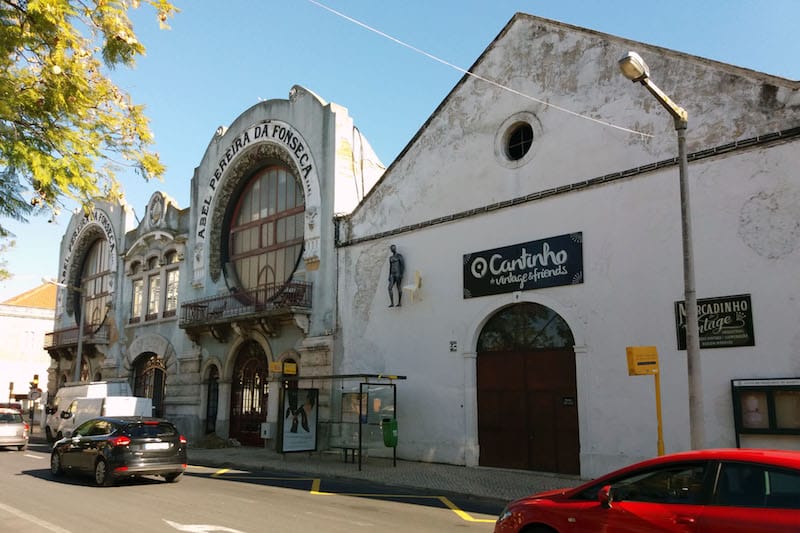
Lisbon: Beato-Marvila
 With Lisbon’s city center transforming at a rapid clip, it’s no surprise that the oft-neglected outer neighborhoods ringing the center are being given a second look. Beato-Marvila is one such area.
With Lisbon’s city center transforming at a rapid clip, it’s no surprise that the oft-neglected outer neighborhoods ringing the center are being given a second look. Beato-Marvila is one such area.
Located in a prime riverside setting, Beato used to be the domain of royal farms and palaces, as well as convents and churches attached to them (the area was offered to the nobility and clergy as a reward after the Portuguese conquest of Lisbon in 1147). In the 19th century, though, the area left its royal past behind and morphed into an industrial center, with business owners converting many of the old convents into warehouses or factories.
During the second half of the 20th century Beato’s factories started closing down and the area entered into a prolonged downward slide. With the exception of a few tascas that served much-needed comfort food to the neighborhood’s remaining workers, there wasn’t much going on here.
That has started to change in some intriguing ways. Riding the wave of investment pouring into Lisbon in recent years, new businesses have moved into this post-industrial neighborhood, with former warehouses and factories being resuscitated. Take, for example, Fábrica Braço de Prata, an old factory that’s been turned into a bookshop, restaurant and event space hosting concerts and exhibitions, or Hub Criativo do Beato, a former military complex that is currently being renovated to house creative businesses and technology companies.
Others can’t be so easily classified – Grilo, a warehouse and art studio, is a space where artists and partygoers converge. Art lovers can also visit the new atelier of Bordalo II, currently one of the most famous street artists in Portugal. Beato-Marvila’s main street, Rua do Açúcar, plays hosts to a wide range of charming spots. There’s Musa, a brewery that’s part of Lisbon’s budding craft beer scene (not far away is Dois Corvos, the first craft brewery in town). The older buildings along this pleasant street are also home to places like Café com Calma (with vintage furniture probably bought in the funky warehouse Cantinho do Vintage) and Capitão Leitão, a new bar that is drawing crowds to the area. But, amidst this sea of new, it’s comforting to see restaurants like O Caçador, an old-school tasca, and Casa do Bacalhau, a traditional spot dedicated to salt cod, still doing brisk business. – Célia Pedroso & João Freitas
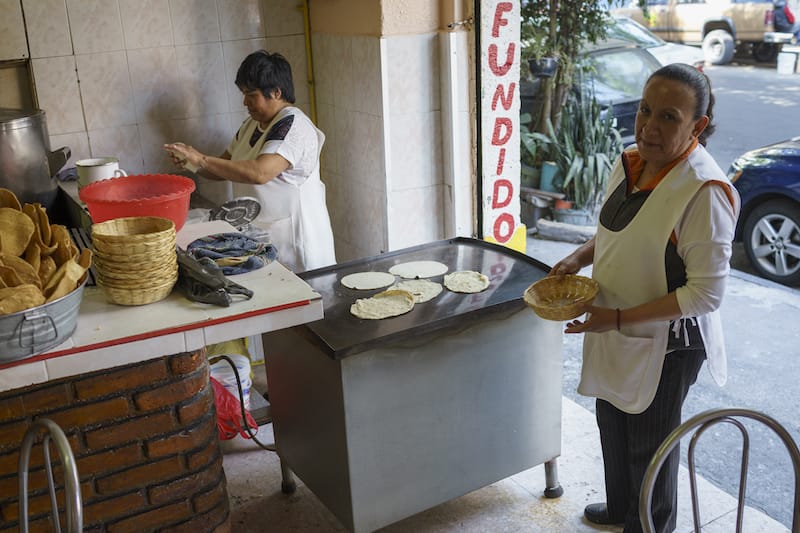
Mexico City: Santa Maria La Ribera
 Mexico City may be continuing to sprawl outwards, but the last decade has been defined by the revival of the city’s central neighborhoods. The Centro Histórico, bustling during the day but previously a barren wasteland after dark, has been revitalized over the last few years and is now home to a number of outstanding restaurants that have helped turn the area into a dining destination. Downtown’s Roma and Condesa neighborhoods, meanwhile, have become something like Mexico City’s answer to Brooklyn: enclaves of cool – at least in the popular imagination – filled with hip restaurants, bars and cafes.
Mexico City may be continuing to sprawl outwards, but the last decade has been defined by the revival of the city’s central neighborhoods. The Centro Histórico, bustling during the day but previously a barren wasteland after dark, has been revitalized over the last few years and is now home to a number of outstanding restaurants that have helped turn the area into a dining destination. Downtown’s Roma and Condesa neighborhoods, meanwhile, have become something like Mexico City’s answer to Brooklyn: enclaves of cool – at least in the popular imagination – filled with hip restaurants, bars and cafes.
This revitalization of the city’s core has not been without its costs. The growing popularity of some of these areas has led to the usual cycle of gentrification: higher rents followed by the exodus of long-time residents and businesses that can no longer afford to stay, ultimately resulting in the loss of what had been the neighborhoods’ original character.
One downtown district that has managed to avoid this fate is Colonia Santa Maria La Ribera, one of the city’s oldest neighborhoods. Founded in the late 1800s, this was Mexico City’s first suburb, an area of grand residences that at the time was far enough from the center of town to give the well-to-do families that moved there the feeling of being out in the countryside. As Mexico City grew, its center eventually enveloped the neighborhood, driving its wealthier residents even further away from downtown. In their place came a mix of middle class and blue-collar families drawn by its convenient location northwest of the city center.
Santa Maria La Ribera might look a bit grimy these days, but it remains one of the city’s more inviting neighborhoods, full of architectural and cultural gems hiding in plain sight. There’s the city’s Geology Museum and the Chopo museum of contemporary art, both housed in dramatic early 20th-century buildings. There’s also the beautiful Sagrada Familia church, which dates to 1899, and – most striking of all – the sublime “Moorish Kiosk,” a cast iron gazebo that was constructed in 1884 to represent Mexico at an international exposition in the United States and was then relocated to Santa Maria La Ribera in 1910, becoming a proud emblem for the neighborhood.
But it’s the food scene that, to me, makes Santa Maria la Ribera so appealing. It’s a neighborhood that keeps surprising me – it seems like every time I go there I find something new. More importantly, the food spots here – some of the best in the city – are still very neighborhood- and family-oriented, with restaurants that have been around for generations. Some local favorites include Maare, one of the best Yucatecan restaurants in the city; Salon Paris, among the oldest cantinas in Mexico; Birria el Güero, a hole in the wall that serves a classic goat soup from the state of Jalisco; and La Oveja Negra, which has been selling barbacoa in the area for more than 60 years.
Gentrification is certainly nipping at the edges of Santa Maria La Ribera and exiles priced out of Roma and Condesa are slowly moving in, but it’s still a neighborhood that feels like a neighborhood – something that can’t be said about every part of downtown Mexico City. – Ben Herrera
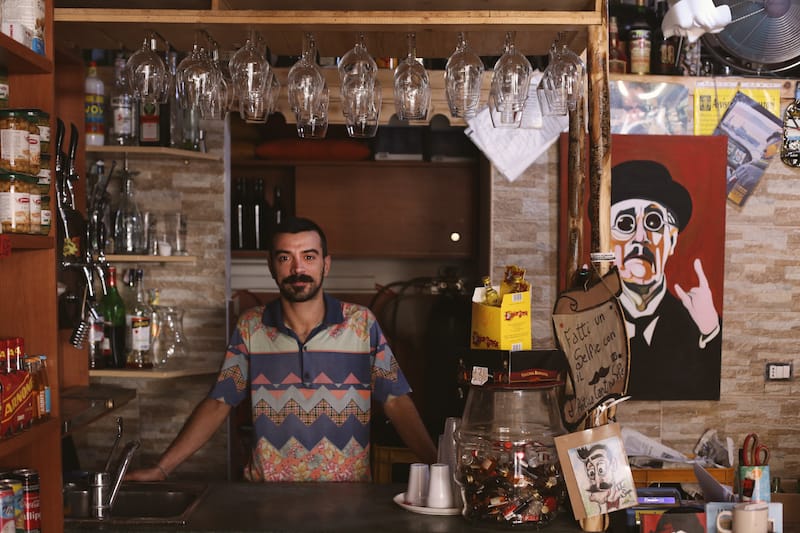
Naples: La Sanità
 La Sanità tends to be secluded from the rest of Naples, tucked away as it is behind the historic center in the shadow of a vast bridge built by Napoleon that skims over its rooftops. This isolation over the years provided an ideal location for the Camorra (the Neapolitan mafia) to expand their illicit activities and profit from soaring unemployment rates and economic instability.
La Sanità tends to be secluded from the rest of Naples, tucked away as it is behind the historic center in the shadow of a vast bridge built by Napoleon that skims over its rooftops. This isolation over the years provided an ideal location for the Camorra (the Neapolitan mafia) to expand their illicit activities and profit from soaring unemployment rates and economic instability.
However, the neighborhood has recently experienced a surge in attention. A multitude of associations and grass-roots community activists have become involved in social initiatives to raise the profile of the underappreciated historic area, which dates back to the Hellenistic period. The neighborhood, which is situated halfway up a hill, was named after its “healthy” reputation – wealthy Spanish Viceroys chose to build their decadent palaces here because rainfall washed the streets clean. Today, the crumbling facades of these palaces serve as a backdrop for a fine selection of family-run gastronomic gems: a bakery, fishmonger, any number of salumerias (delicatessens) and enotecas (wine bars). Moreover, key tradesmen such as Ciro Poppella and Francesco Sepe are on the front foot, reinvigorating their family businesses and attracting new customers for the benefit of the whole neighborhood. – Adapted from Sophia Seymour’s article “Clean Bill of Health: La Sanità’s Resurgence”
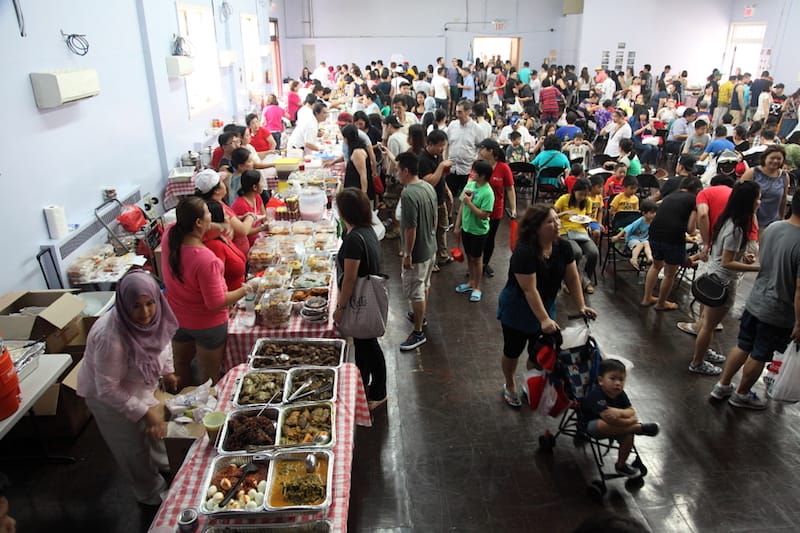
Queens: Elmhurst
 Less than a half-hour by rail from midtown Manhattan, the working-class neighborhood of Elmhurst, Queens, seems like another world. After leaving the shadows of the elevated 7 train, we find that the rooftops are lower, the sunlight brighter, the breezes fresher. Long ago this was a Native American hunting and fishing ground, settled in turn by the Dutch and the English; the paths of wide colonial roadways are traced today by bustling Grand Ave., Broadway and Queens Blvd. Yet much of Elmhurst has a small-town feel, thanks to a grid of quiet side streets. In the years before World War II, these streets were populated with modest housing for a largely Jewish and Italian population.
Less than a half-hour by rail from midtown Manhattan, the working-class neighborhood of Elmhurst, Queens, seems like another world. After leaving the shadows of the elevated 7 train, we find that the rooftops are lower, the sunlight brighter, the breezes fresher. Long ago this was a Native American hunting and fishing ground, settled in turn by the Dutch and the English; the paths of wide colonial roadways are traced today by bustling Grand Ave., Broadway and Queens Blvd. Yet much of Elmhurst has a small-town feel, thanks to a grid of quiet side streets. In the years before World War II, these streets were populated with modest housing for a largely Jewish and Italian population.
Many of those residents, newly affluent in the 1950s and ‘60s, moved to the New York suburbs. Their departure made room for new “settlers,” of modest means, from around the world, speaking an untold number of mother tongues and following nearly as many culinary traditions. Today, Elmhurst – and the streets immediately surrounding it, in Corona, Jackson Heights and Woodside – is rich with restaurants, cafés, bakeries and markets featuring cuisines from all across Latin America as well as South, East and Southeast Asia, with a variety of European and American establishments for good measure. Moreover, the neighborhood’s Chinatown is blossoming: A massive indoor food court with nearly three dozen vendor stalls and hundreds of seats is expected to open in 2018. (To be sure, a recruitment poster solicits potential vendors in English, Chinese, Spanish, Hindi and Vietnamese – all in a day’s eating for Elmhurst.)
For the culinary explorer, edible rewards abound. Pay a call, if your timing is good, on the neighborhood’s monthly Indonesian bazaar, where a vast archipelago of diverse gastronomic traditions are on display in a single parish hall. On Fridays and Saturdays, pull up a stool outside the Iglesia La Luz del Mundo to savor hot, griddled-to-order pupusas stuffed with fresh herbs hand-carried from El Salvador. Indeed, every day you can walk the streets and witness countless stories of immigrants who sell food from “back home” as a first step toward success in their new home. Small businesses like these, whether conducted from a storefront or from a pushcart, are quickly vanishing from much of New York, but they’re as lively as ever in Elmhurst. – Dave Cook

Rio de Janeiro: Laranjeiras
 Rio may be a beach town, but lately people have been heading for the hills. With rental prices in the most trendy neighborhoods of the city’s South Zone peaking in the last seven years, many cariocas have decided to move to less expensive pastures: far from the ocean, but closer to the forests. Laranjeiras is one such place. While still in the South Zone, this mostly residential district has remained affordable and is now home to many artists, musicians, journalists and even some foreigners. Located below Floresta da Tijuca (the city’s urban forest), the neighborhood spreads down the hillside, but doesn’t quite reach the sea, and is probably best known for its older buildings as well as its tree-lined streets.
Rio may be a beach town, but lately people have been heading for the hills. With rental prices in the most trendy neighborhoods of the city’s South Zone peaking in the last seven years, many cariocas have decided to move to less expensive pastures: far from the ocean, but closer to the forests. Laranjeiras is one such place. While still in the South Zone, this mostly residential district has remained affordable and is now home to many artists, musicians, journalists and even some foreigners. Located below Floresta da Tijuca (the city’s urban forest), the neighborhood spreads down the hillside, but doesn’t quite reach the sea, and is probably best known for its older buildings as well as its tree-lined streets.
Just as residents are running away from the exorbitant prices in Leblon, Ipanema and Copacabana, so too are businesses. Many charming bars and restaurants have opened here in the past couple of years, adding to the neighborhood’s newly rediscovered vigor. While people have traditionally frequented the neighborhood’s numerous squares, like Praça São Salvador, for open-air music performances, these spots have become increasingly popular due to the economic crisis (cariocas are avoiding pricey clubs and traditional samba spots). São Salvador turns into an open-air party during happy hour every day, with the stalls, bars and markets lining the square selling hot dogs, hamburgers, tapioca dishes, beers and even bottles of wine poured out in plastic glasses. On Sundays, it plays host to a famous live presentation of chorinho, the uniquely Brazilian rhythm that mixes samba and jazz.
Visitors rarely see this side of the neighborhood: If they do come to Laranjeiras, it’s usually on their way to the picturesque red train at Cosme Velho station that whisks them up to Christ the Redeemer. But they’re missing out on some delightful gastronomic discoveries. There’s Rotisseria Sirio-Libanesa, a Syrian-Lebanese eatery right on the border between Laranjeiras and Catete that serves the best esfihas and kibes in Rio. The neighborhood’s main street, Rua das Laranjeiras (which turns into Rua Cosme Velho at its upper end), is home to Mercadinho São José das Artes, a former senzala (slave house) that now hosts a number of art galleries, eateries and popular bars. In the vicinity of Mercadinho is Pisco, the one and only Peruvian botequim in Rio that serves ceviches and tiraditos in the carioca way. For drinks, we usually head to either Bar do B, a bar with a dance floor or, if we feel like socializing rather than dancing, the gastropub Botero. The latter is always crowded with people standing up and eating its famous street food.
The most recent economic crisis is certainly contributing to the increased popularity of Laranjeiras – it’s chock-full of creative cheap eats and free music. But it’s not just about the money. This laid-back neighborhood has artistic roots, which can be seen in its elegant old buildings and the long-standing practice of musicians gathering to play in its squares. People and business are in search of originality as much as cheap rents, and Laranjeiras has it in spades. – Juarez Becoza
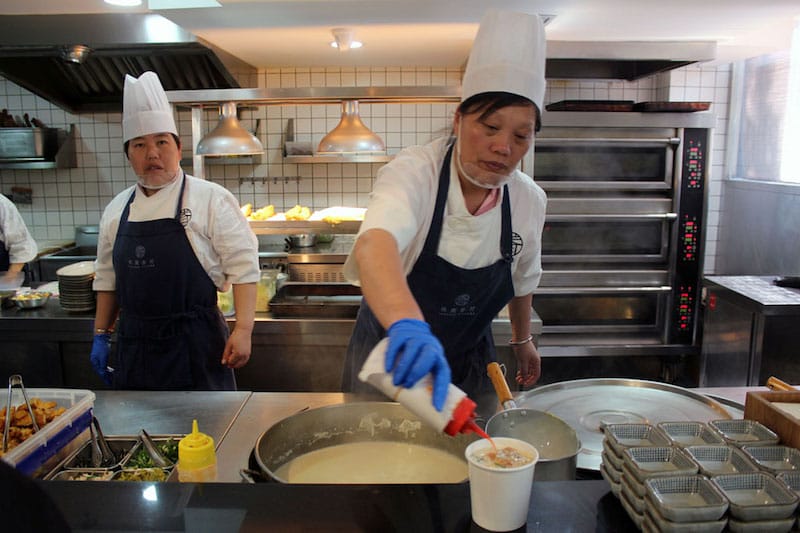
Shanghai: Changning
 Just west of the Former French Concession, Changning district’s eastern half has all the same trappings of its more famous neighbor: The quiet streets are canopied in London Plane trees and populated with trendy restaurants and bars housed in the art deco buildings that Roaring Twenties expats, like novelist JG Ballard, used to call home. At the western edge of Changning – a full 10km away in this sprawling district – is the Hongqiao Transportation Hub, which was built for the 2010 Expo and brought in the type of investment real estate developers love. So along came the shiny malls with their food courts (which is a good thing in this part of Asia). In between the two is Koreatown and Little Tokyo, districts filled with East Asian expats who frequent local omakase sushi houses, giant gogi-gui restaurants and K-Pop karaoke halls.
Just west of the Former French Concession, Changning district’s eastern half has all the same trappings of its more famous neighbor: The quiet streets are canopied in London Plane trees and populated with trendy restaurants and bars housed in the art deco buildings that Roaring Twenties expats, like novelist JG Ballard, used to call home. At the western edge of Changning – a full 10km away in this sprawling district – is the Hongqiao Transportation Hub, which was built for the 2010 Expo and brought in the type of investment real estate developers love. So along came the shiny malls with their food courts (which is a good thing in this part of Asia). In between the two is Koreatown and Little Tokyo, districts filled with East Asian expats who frequent local omakase sushi houses, giant gogi-gui restaurants and K-Pop karaoke halls.
The big difference between Changning and the neighboring former French Concession? Cheaper rent, of course. Thanks to lower overhead, affordable restaurants popular with QR-scanning millennial Chinese diners are a dime a dozen, like Taiwanese breakfast shop Taoyuan Village and Sichuan noodle house Liu Dao Men. But you can still find cultural mainstays in the area who have survived the modernization of eating in China. Just pop into Wu Guan Tang, a Buddhist vegetarian institution whose clientele often include saffron-robed monks, or A Shan, one of Shanghai’s first privately owned restaurants that traded favors for rationing coupons in the years after Reform & Opening. When it comes to Changning, there’s nothing but room to explore. – Jamie Barys

Tbilisi: Plekhanov
 Tbilisi’s Plekhanov district used to be a neighborhood of crumbly 19th-century buildings hiding behind the enormous eucalyptuses that had burst through broken sidewalks. The only thing it had that other rundown parts of town didn’t were Turkish restaurants. Today, though, the hood is hipster headquarters, thanks to the Fabrika complex, an old Soviet sewing factory that has become a trendy urban space of bars, restaurants, boutiques and a hostel. The reportedly $8 million project has encouraged others to open artsy cafes on surrounding streets, which are great to wander on.
Tbilisi’s Plekhanov district used to be a neighborhood of crumbly 19th-century buildings hiding behind the enormous eucalyptuses that had burst through broken sidewalks. The only thing it had that other rundown parts of town didn’t were Turkish restaurants. Today, though, the hood is hipster headquarters, thanks to the Fabrika complex, an old Soviet sewing factory that has become a trendy urban space of bars, restaurants, boutiques and a hostel. The reportedly $8 million project has encouraged others to open artsy cafes on surrounding streets, which are great to wander on.
The storefront antique shops on Tsinamdzgvrishvili are still there, and the Wine Gallery is a great spot to get wine on tap. The always excellent Shavi Lomi relocated a few blocks up, while a couple of our favorite places, Amber Bar and Aripana, are located on the tourist-heavy pedestrian section of Aghmashenebeli. The other end of the street, near the metro station, is still full of tasty Turkish joints, now joined by coffeehouses and the vanguard of local gentrification, Dunkin’ Donuts. But behind the metro are the same old hole-in-the-wall khachapuri bakeries, second hand clothing shops and little markets we recall from years past. – Paul Rimple
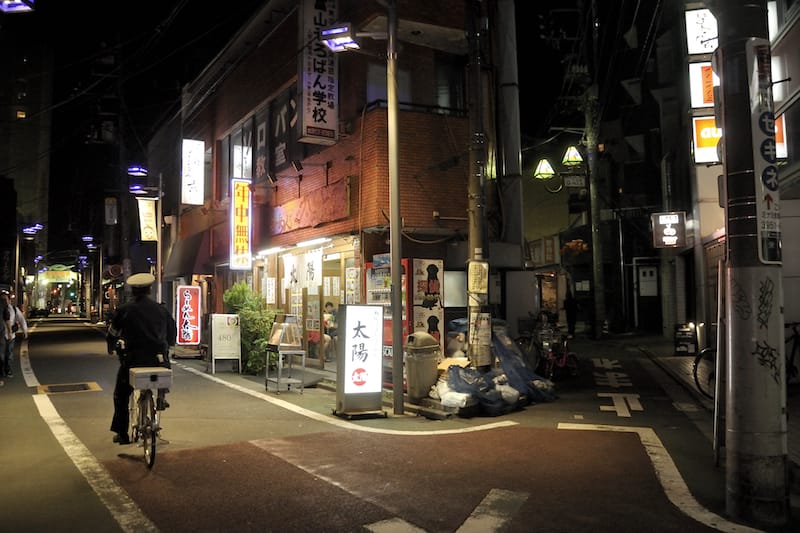
Tokyo: Ekoda
 In recent years, Ekoda’s distinct, hodgepodge character has been luring even the most diehard urbanites out to Tokyo’s northwestern reaches. A local-only stop on the Seibu Ikebukuro Line, this diminutive, mostly residential neighborhood manages to blend the old with the new, the homegrown with the international. It’s a neighborhood caught in transition, with vestiges of Tokyo’s post-war past only partially paved over by forward-looking hideaways. In this respect Ekoda is a microcosm of Tokyo at large.
In recent years, Ekoda’s distinct, hodgepodge character has been luring even the most diehard urbanites out to Tokyo’s northwestern reaches. A local-only stop on the Seibu Ikebukuro Line, this diminutive, mostly residential neighborhood manages to blend the old with the new, the homegrown with the international. It’s a neighborhood caught in transition, with vestiges of Tokyo’s post-war past only partially paved over by forward-looking hideaways. In this respect Ekoda is a microcosm of Tokyo at large.
Its cosmopolitan spirit is due in part to a number of nearby universities, including one of the country’s best art schools. Student haunts like cafes, ramen shops and used bookstores share street space with démodé mom-and-pop shokudō (traditional Japanese diners), old-school standing bars and open-air grocers’ stalls. It’s an easy neighborhood to explore on one’s own, with its wide range of eateries and compact, eclectic watering holes concealed within warrens of narrow lanes. Consider seeking out Rastafarian-themed ramen shop Yahman, stylish sake bar Lantern, or longtime expat favorite Shamaim, which has been serving up the best falafel in Tokyo since 1995. – Davey Young
Editor’s note: To celebrate the ‘Year of the Neighborhood,’ we will be republishing dispatches from these neighborhoods all week. Stay tuned!
 January 14, 2019 Going Deep
January 14, 2019 Going Deep
As the calendar year turns over, we’ve grown accustomed to the barrage of lists telling […] Posted in Elsewhere January 8, 2018 Going Deep
January 8, 2018 Going Deep
As the calendar year turns over, we’ve grown accustomed to the barrage of lists telling […] Posted in Istanbul, Special category January 8, 2018 Going Deep
January 8, 2018 Going Deep
As the calendar year turns over, we’ve grown accustomed to the barrage of lists telling […] Posted in Mexico City, Special category
Published on January 08, 2018
Related stories
January 14, 2019
Elsewhere | By Culinary Backstreets
ElsewhereAs the calendar year turns over, we’ve grown accustomed to the barrage of lists telling us where to travel during the next 12 months. Oftentimes these places are a country or even a whole region – you could spend an entire year exploring just one of the locations listed and still barely make a dent.…
January 8, 2018
Istanbul | By Culinary Backstreets
IstanbulAs the calendar year turns over, we’ve grown accustomed to the barrage of lists telling us where to travel during the next 12 months. Oftentimes these places are a country or even a whole region – you could spend an entire year exploring just one of the locations listed and still barely make a dent.…
January 8, 2018
Mexico City | By Culinary Backstreets
Mexico CityAs the calendar year turns over, we’ve grown accustomed to the barrage of lists telling us where to travel during the next 12 months. Oftentimes these places are a country or even a whole region – you could spend an entire year exploring just one of the locations listed and still barely make a dent.…







































